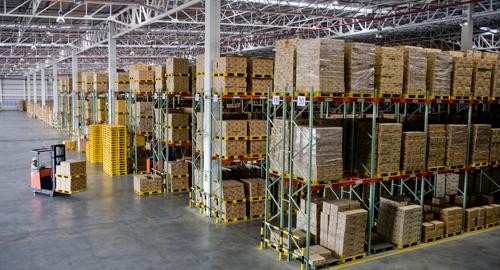
The industrial automation movement continues to progress due to the ongoing evolution of enterprise robotics technology. The automated production assets literally rolling out of factories and laboratories possess immense potential. In fact, analysts for PricewaterhouseCoopers believe robots could fill almost 40 percent of all U.S.-based industrial and manufacturing positions by 2030. With this possibility in mind, businesses have begun investing heavily in robotics technology. Spending on such assets is expected to surpass $100 billion this year and near the $200 billion mark by 2020, according to insights from the International Data Corporation.
Warehouses are among the most prominent testing grounds for enterprise robotic assets. Consequently, shipping and receiving operations are changing rapidly as automated equipment becomes more accessible and workable use cases crystallize. Stakeholders in these departments are set to spend billions on robotics over the next five years in an effort to adjust to the changing warehousing tides, the researchers at MarketsandMarkets found. The market for warehouse robotics technology is expected to reach $4.4 billion by 2022, propelled by a compound annual growth rate of more than 11 percent.
A transformational movement
Amazon catalyzed the warehousing robotics arms race in 2012 when it purchased the technology firm Kiva Systems for $775 million, The Boston Globe reported. Over the next five years, the e-commerce company integrated more than 80,000 robots into its 25 U.S. fulfillment centers, according to the Puget Sound Business Journal. These moves forced competitors to adopt similarly automated shipping and receiving processes, spurring the era of warehousing transformation that is currently unfolding. Today, businesses of all sizes are experimenting with various warehouse-based robotic fixtures, from the automated palates found in Amazon distribution centers to collaborative equipment that human workers can utilize to ease the stress of manual movement.
The latter implementation method has caught in numerous organizations, The Wall Street Journal reported. For example, the global shipping company DHL leverages swarming robots in its Memphis, Tennessee, facility to help workers pick items for shipping.
"The market for warehouse robotics technology is expected to reach $4.4 billion by 2022."
More improvement to come
Warehouse robotics deployments are expected to evolve over the coming years as automated technology grows more advanced. These forthcoming solutions will most certainly center on artificial intelligence software, which has moved forward considerably thanks to tests conducted in shipping and receiving facilities, according to The Verge. Software developers at the technology firm D-Wave recently created an automated sorting arm that not only includes virtual reality controls for human operators but also leverages AI software to learn and deploy proper product classification techniques. Researchers at the University of California, Berkeley are working on something similar, The New York Times reported. The device, a robotic limb, uses a cutting-edge camera system and neural networks to sort through bins filled with random items to grab specific objects.
These AI-powered tools represent the future of automated warehousing, a space that continues to grow and transform. Organizations interested in optimizing and future-proofing their operations should watch this niche and begin considering potential implementation pathways. Of course, before jumping into the race for automated warehousing technology, businesses must ensure they have the backend systems required to support such innovations.
F&A Data Systems can help those lacking in this regard. We work with cutting-edge industrial technology partners such as Dell, Microsoft and Rockwell Automation to develop and deploy customized warehouse management solutions that support more productive warehouse workflows and leading-edge technological deployments. Contact us to learn how we can transform your warehouse.
